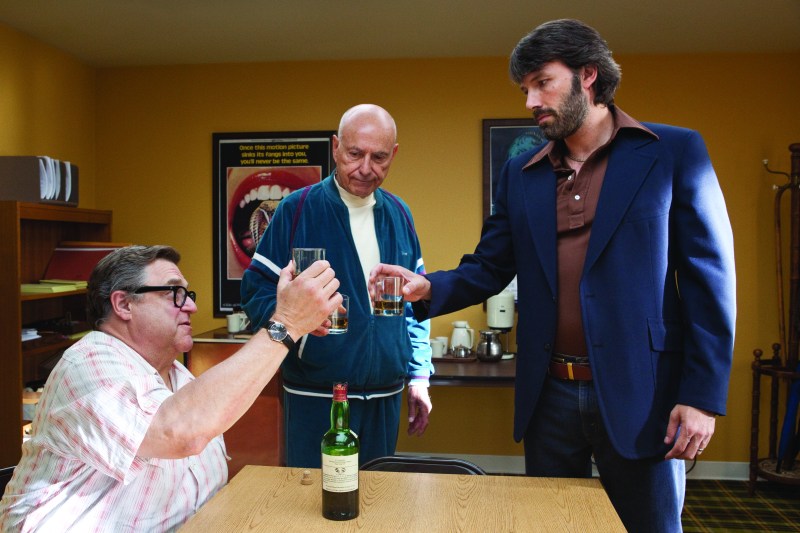There are few demographics that will appreciate “Argo” more than Stanford students (and alums). This historical drama-meets-thriller-meets-heist will satisfy your demands for intellectual stimulation, historical relevance, action, and sharp, witty banter all at once.

“Argo” is the story of a declassified CIA exfiltration (referred repeatedly mysteriously as an “ex-fil” for the first fifteen minutes of the movie) effort to rescue six Americans hiding out in the Canadian ambassador’s home during the Iranian hostage crisis in 1979. “Argo” refers to a movie script, which becomes the lynchpin of the risky rescue mission. Ben Affleck, director and star of this film, plays a young but brilliant CIA operative who comes up with an unconventional plan to get the Americans to safety: they will pose as a movie crew on location for their coming movie, “Argo” (hence, the name).
You’ll start holding your breath about a minute into the Persepolis-style historical summary/narrated graphic novel portion of the beginning of the movie, but you won’t notice it until the setting switches to the CIA Headquarters and you gasp at the sight of Bryan Cranston with a full head of hair. Cranston, who has a strong supporting cast in the movie, is one of several droll but tough CIA dudes running things in the inner sanctum of secret operations.
The scenes and plotline based out of CIA Headquarters, the State Department and the White House provide an intriguing portrait of Cold War era government and intelligence, as well as a fair amount of comic relief. These suits, in conjunction with the characters organizing the “Argo” façade from the Hollywood side of things, are integral to the poignant contrast between American and Iranian cultures and history, a theme which crops up intermittently throughout the film. The most striking moments also utilize real news clips of riots, protests, and the hostage crisis from 1979, which are shrewdly interspersed with the plot of the movie.
The second half of the movie feels much more like a thriller, fraught with one suspenseful saga after another. Frankly, it’s a little too heavy on the suspense and on the Murphy’s Law (“everything that can go wrong will go wrong”) type of developments. It’s quite literally exhausting, physically and emotionally, to be that tense for that long, but it does make you feel for CIA operatives and/or hostages. In the midst of this extended climax, there are also a few standout performances from Alan Arkin and Scoot McNairy, including an incredible scene that will put your PWR-approved presentation skills to shame. Be sure to watch for their use of visual aids in selling their cover in one particularly close situation.
All in all, “Argo” is surprisingly self-aware and forward thinking for a story entirely set in 1979. By the end of the movie, you’ll be pondering some bigger picture consideration about the role of the press, government and CIA in achieving justice … whatever that means. Your heart rate will still be racing from your lengthy period of empathetic stress for the home team, but while it slows down, and you sip your last sip of Coke and sit back in your movie theater throne, you’ll also start to wonder how much more may be going on at home or abroad than we’re privy to. Here’s hoping we’re still around to see the movies about the presently declassified stories when they’re declassified twenty years from now.
